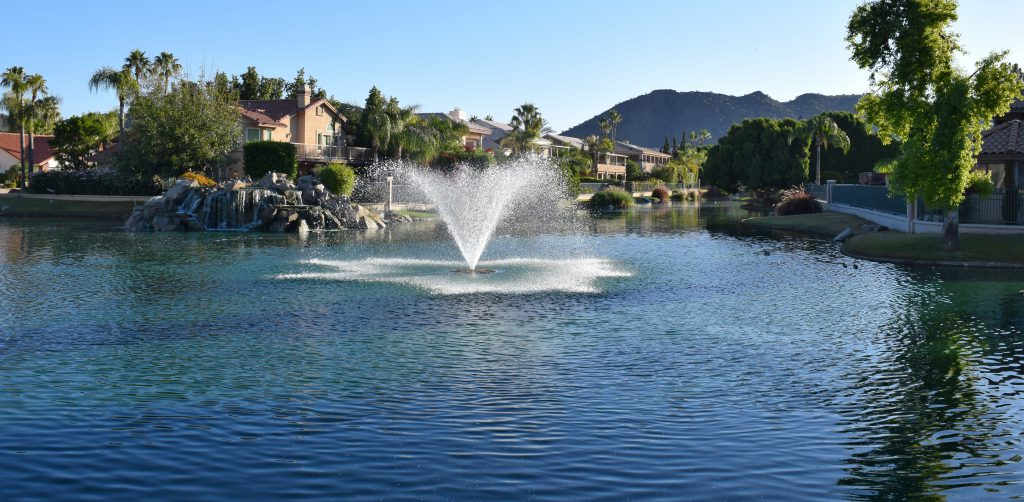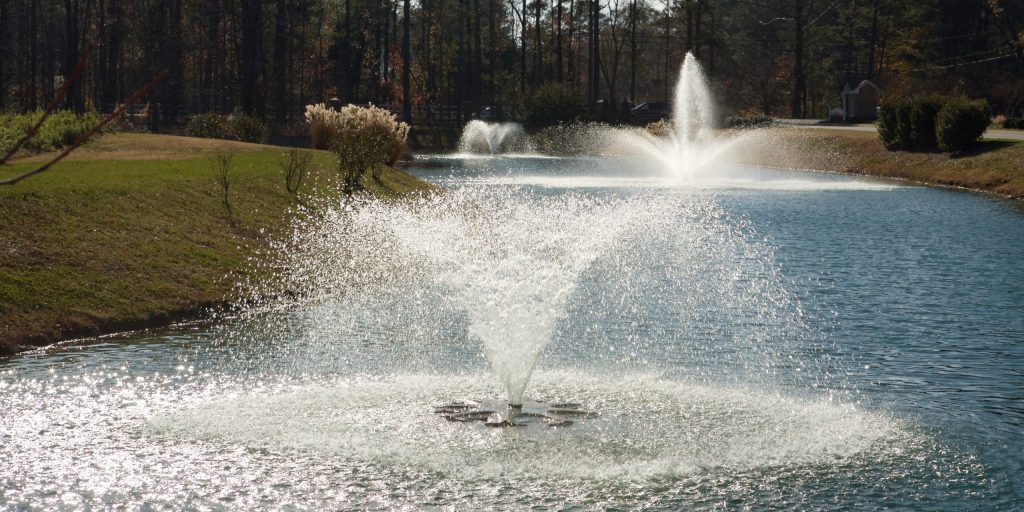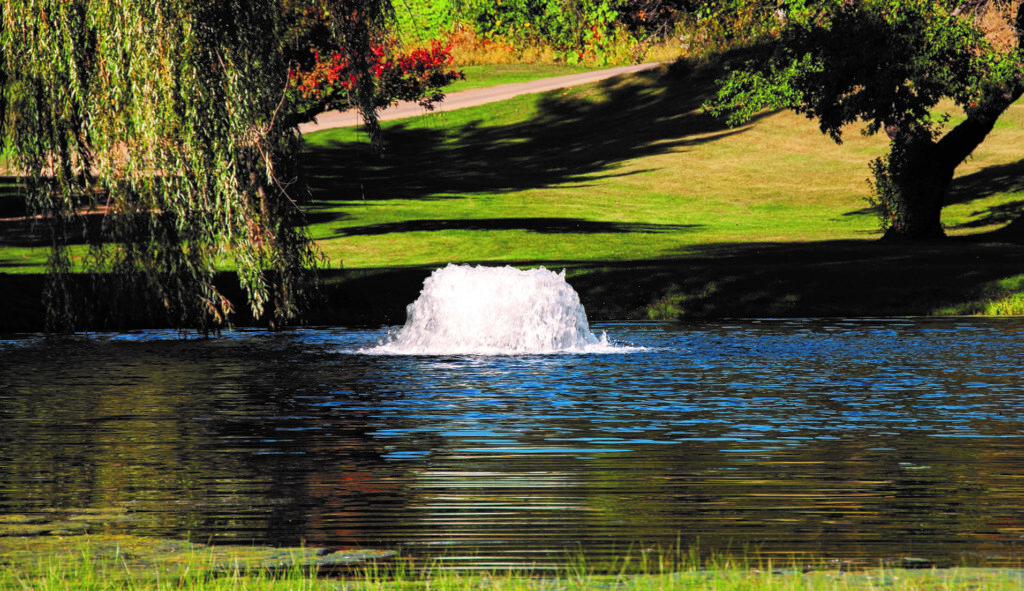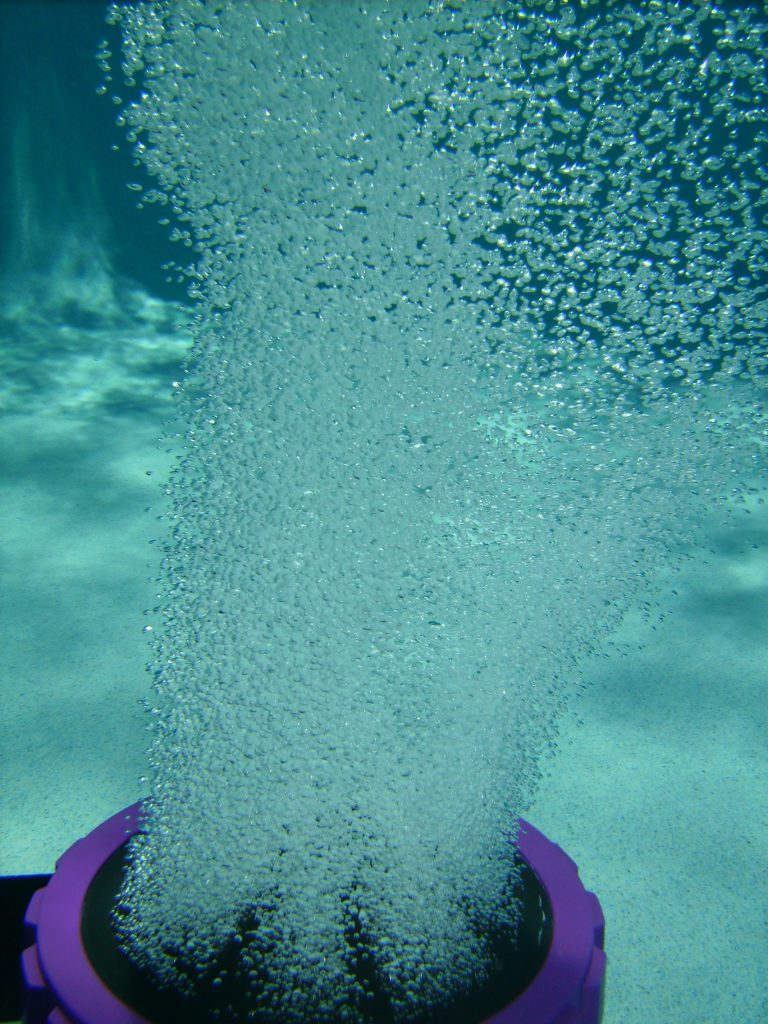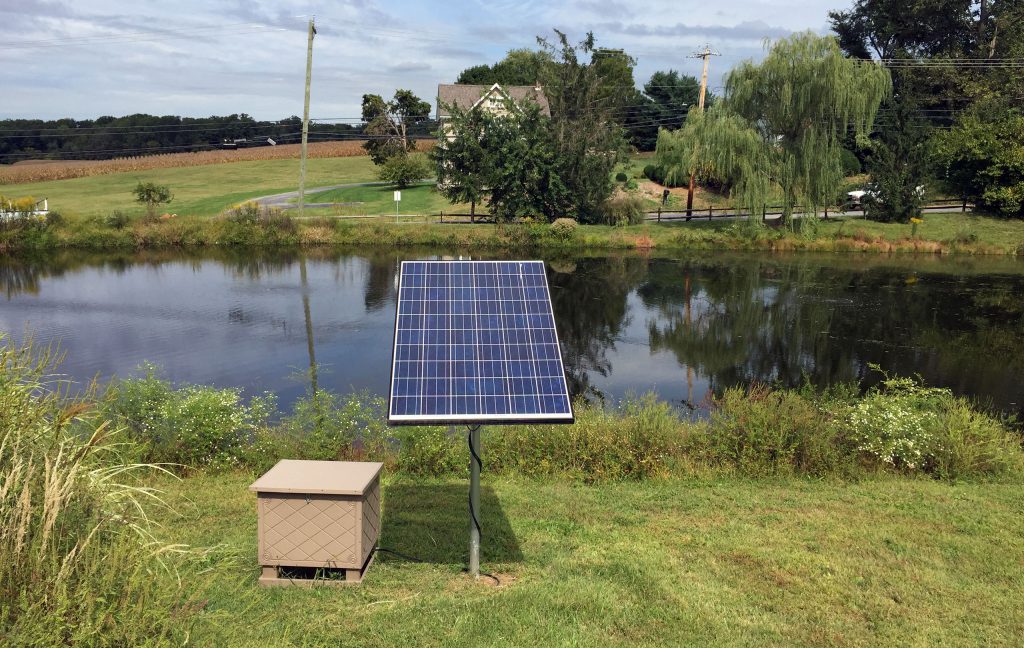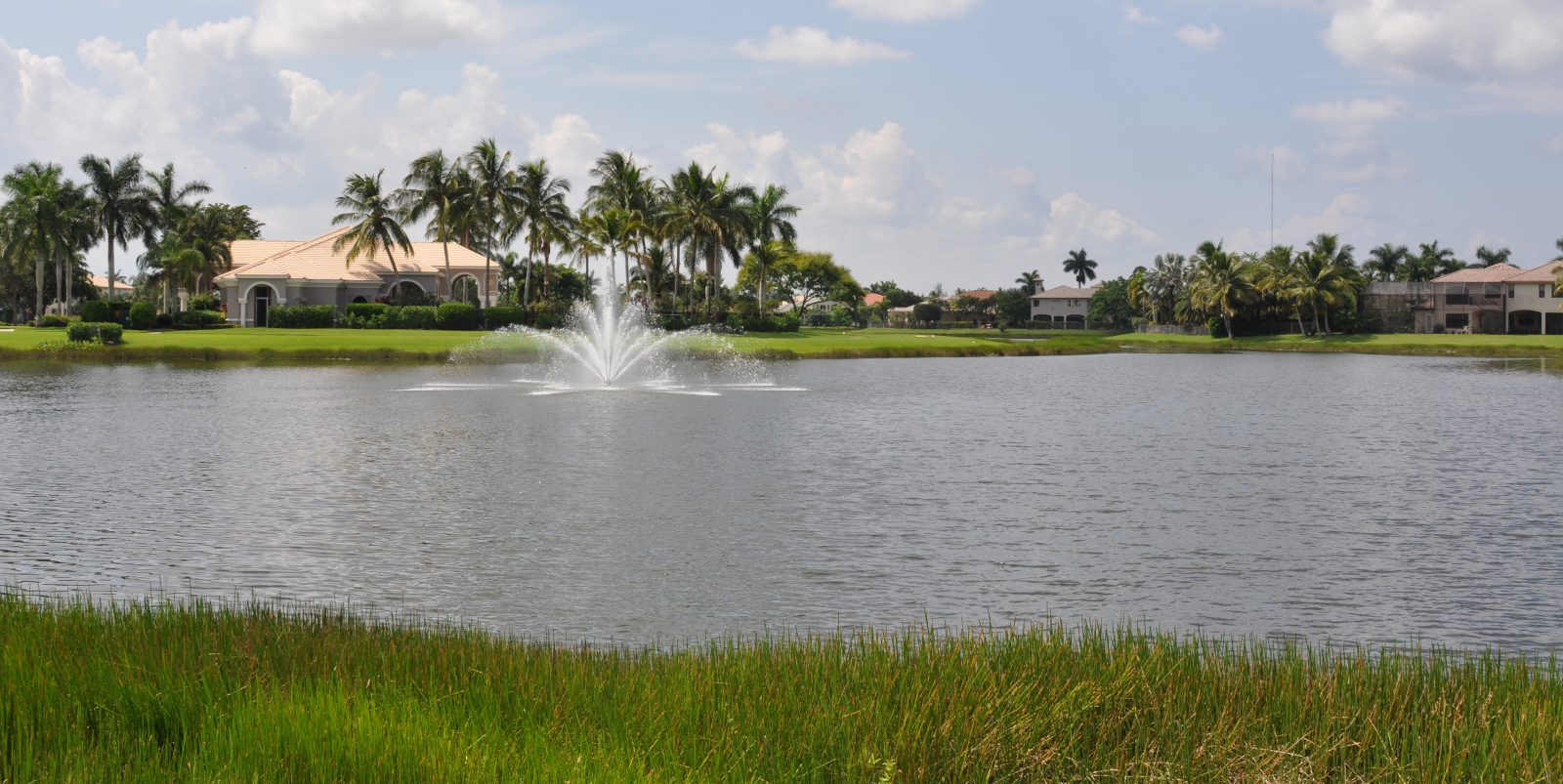
Finding the Right Pond and Lake Aeration System for Your Waterbody
Lakes and ponds have many different functions: they collect sediment and flowing water during rain storms, they operate as fishing spots for angling enthusiasts and they serve as beautiful ecosystems for communities to enjoy year-round. But when left unmanaged, they can develop physical and chemical imbalances that may jeopardize the lifespan of the waterbody and the wellbeing of the surrounding ecosystem. The best way to help ensure healthy water quality year-round is through the implementation of proactive pond management solutions, including the addition of a lake aeration system.
Lake Aeration Systems: Protect Your Water Against Poor Water Quality
When water quality imbalances occur in a lake or pond, one of the initial strategies recommended by professionals to help restore balance and prevent future problems is the introduction of a lake aeration system. Lake aeration systems may not be the first solution that comes to mind when encountering a lake covered in weeds and algae, but the resulting oxygenation can make an immense difference when utilized effectively and as part of a comprehensive management plan. The benefits of an oxygenated lake or pond are enormous.
Oxygenation can help reduce undesirable algae by facilitating the conversion of phosphorus to forms that do not sustain algae growth. It can also adjust pH and other related water quality parameters to help improve the growth of fish, native organisms and healthy green phytoplankton – rather than cyanobacteria species, which can be toxic to humans and wildlife. Most importantly, improved oxygenation and water circulation can help reduce the accumulation of sediment at the bottom of the waterbody, which is one of the most common signs of an aging pond. As a result, the waterbody is naturally healthier and is less likely to require algaecide treatments or costly dredging. Depending on the unique goals and characteristics of the waterbody, three types of lake aeration systems may be considered.
Lake Aeration with Floating Fountains
Shallow lakes and ponds can benefit from lake fountains, which spray water into the air in a variety of aesthetically pleasing patterns depending on nozzle type. Beneficial oxygenation occurs when the water splashes back down onto the pond, allowing for submerged gases to escape at the surface. While lake fountains are best suited for shallow waterbodies, other lake aeration systems may be used to target deep lakes and ponds.
Surface Lake Aerators
Surface aerators provide similar visual appeal to floating lake fountains, however, their oxygenation benefits are more powerful. Surface lake aerators are efficient at moving a significant amount of water through large propellers. Instead of shooting spray patterns like floating fountains, surface aerators create a boil-like movement at the surface and can inject up to three pounds of oxygen per horsepower into the water each hour. This system is effective in shallow and deep waterbodies ranging from 4 to 6 feet deep.
Submersed Lake Aeration Systems
Submersed diffused lake aeration systems can help oxygenate the lower depths that floating fountains can’t reach, particularly in deep lakes and ponds. Submersed lake aeration systems utilize a weather-protected on-shore compressor to pump air through a subsurface tube to submerged bubble diffusers. As the bubbles rise, they carry the low-oxygen water from the bottom toward the surface, where it mixes with the oxygen-rich surface water and atmospheric oxygen before sinking back to the bottom. The continuous vertical mixing helps to increase dissolved oxygen concentration throughout the entire waterbody.
Solar Submersed Lake Aeration Systems
The benefits of lake aeration are not just limited to lakes and ponds near electrical power sources. Solar lake aeration systems and wind-powered lake aeration systems facilitate the introduction of lake aeration to remote locations, and can also serve as an eco-friendly alternative for those interested in reducing their environmental footprint. While these systems still utilize an on-shore compressor that pumps air to the depths of the waterbody, the source of power is naturally occurring wind or sunlight. A backup battery will ensure the lake aeration systems continue working when the wind isn’t blowing or the sun is down. Solar and wind-powered aerators still require professional maintenance on a regular basis, but unlike traditional products, the minimal cost of power allows the systems to pay for themselves over time.
Achieve Beautiful Water Year-Round with Lake Aerators
No two waterbodies are alike, but no matter the function they serve in a community, all lakes and ponds can benefit from lake aeration. A professional can help identify the best types of systems for your specific waterbody and proper placement while helping you develop a comprehensive management plan to sustainably enhance the aquatic environment.
In addition to lake aeration, a long-term management plan nurtures all areas of the ecosystem through the introduction of beneficial vegetative buffers, nuisance and invasive species management, and seasonal water quality testing by a licensed professional. With regular maintenance and attention, your lake or pond can look healthy and beautiful while efficiently performing as intended.
The Top 3 Benefits of Lake Aeration Systems
Contact Us to Enhance Your Water with a Lake Aeration System
Complete the form below or call us at 888-480-5253 to find the lake aeration system that is right for your property.
SOLitude Lake Management is a nationwide environmental firm committed to providing sustainable solutions that improve water quality, enhance beauty, preserve natural resources and reduce our environmental footprint. SOLitude’s team of aquatic resource management professionals specializes in the development and execution of customized lake, pond, wetland and fisheries management programs that include water quality testing and restoration, nutrient remediation, algae and aquatic weed control, installation and maintenance of fountains and aeration systems, bathymetry, mechanical harvesting and hydro-raking, lake vegetation studies, biological assessments, habitat evaluations, and invasive species management. Services and educational resources are available to clients nationwide, including homeowners associations, multi-family and apartment communities, golf courses, commercial developments, ranches, private landowners, reservoirs, recreational and public lakes, municipalities, drinking water authorities, parks, and state and federal agencies. SOLitude Lake Management is a proud member of the Rentokil Steritech family of companies in North America.








